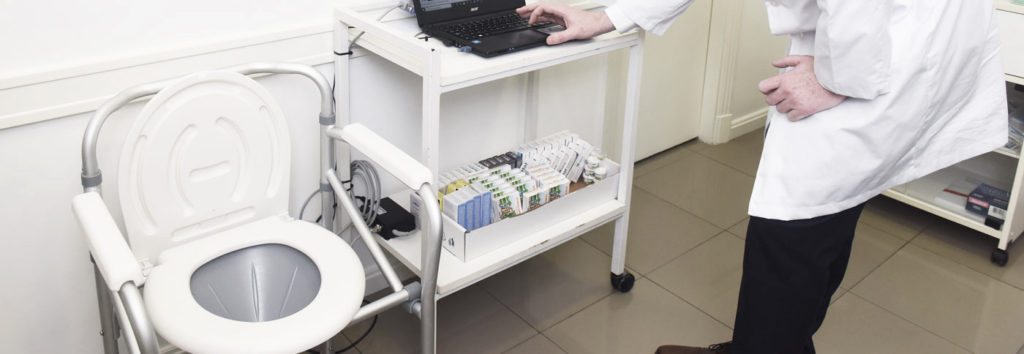What is a flowmetry?
A flowmetry or uroflowmetry is a test that is usually performed in the urologist’s office in male or female patients who have difficulty urinating. This test is routinely performed on patients who are undergoing prostate check-up in order to evaluate if they are urinating properly.
The technical definition of uroflowmetry is the voiding volume (urine) eliminated per unit of time and is expressed in ml per second. Voiding flow is not constant, it changes throughout the micturition, causing characteristic flow curves.
The purpose of this test is to measure the amount of urine that the patient’s bladder is able to expel per second, to corroborate the duration of urination and any intermittent flow.
In this way the bladder capacity, the state of the urinary tract and the strength of the urinary musculature will be known.
It is important to measure the post-micturition residual, i.e. the amount of urine remaining in the bladder at the end of the uroflowmetry test.

What parameters can be measured in a flowmetry?
- Peak flow (Qmax): the maximum value reached by urine flow during micturition.
- Voiding volume: The amount of urine eliminated during micturition.
- The flow time: The sum of all the time during which the patient is urinating.
- Micturition time: Time elapsed from the time the patient starts to finish urination. This time coincides with the flow time as long as there is no interruption of the voiding stream.
How is a flowmetry performed?
The procedure to perform a flowmetry is simple: the patient has to urinate in a device (special toilet) and/or in a measuring funnel (flowmeter).
The result of this test is a graph showing the volume of urine versus the time taken.
This test requires normal urination and is not painful.

When is it convenient to repeat the test?
It is advisable to repeat the urine flow test when a urine volume greater than 150 cm3 is not reached, or when the patient has used abdominal force to achieve a stronger stream. It is also not useful when the bladder has been filled beyond its maximum capacity.
Post-Micturition Residue
Postvoid residual is the amount of urine remaining in the bladder after urination is completed. Normally a Urologist should always know what the residual is because it is also indicative of possible voiding problems. A residue much higher than 20-30% of the volume that has been urinated may be pathological and may be causing chronic damage to the urinary tract if not corrected.
The usual, most practical and quickest way to measure the residual is to place the ultrasound machine on the lower abdomen to record the residual urine volume.
